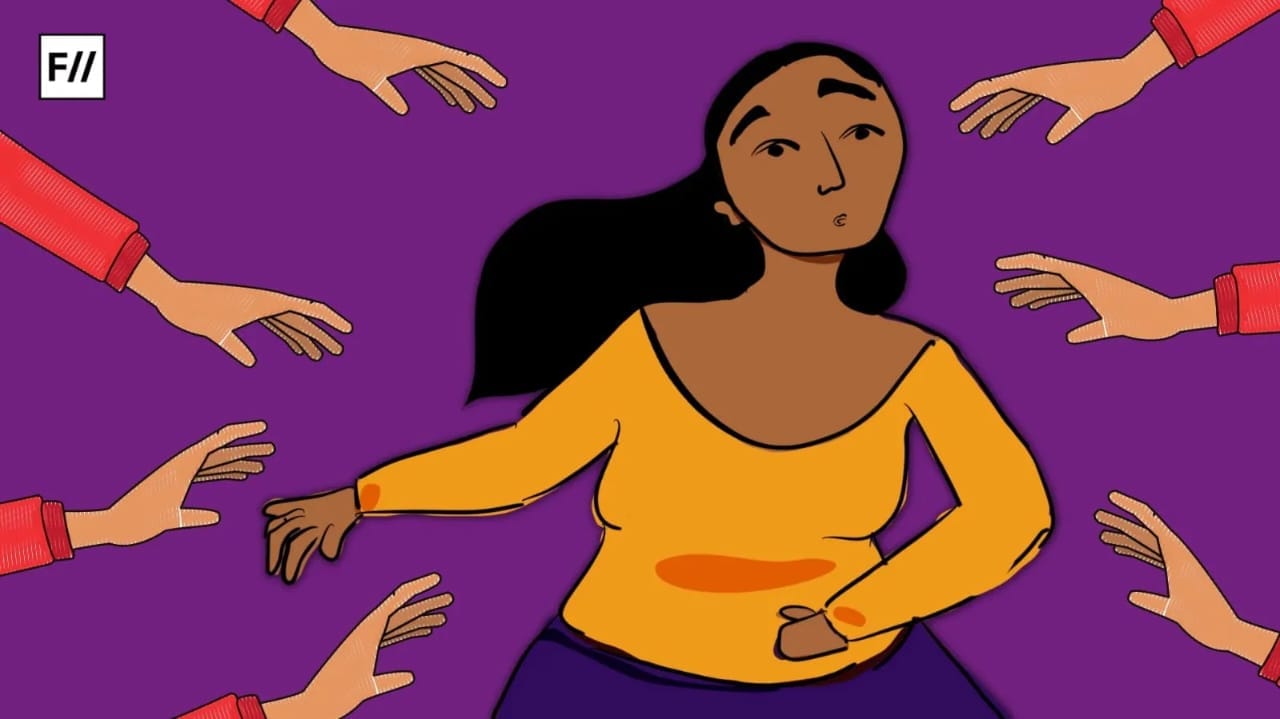The term gender-based violence (GBV), for most people, brings to mind rape, battery, assault, female genital mutilation and any and all forms of physical violence. The dictionary definition of violence that comes up as the first search result is “behaviour involving physical force intended to hurt, damage, or kill someone or something”.
But this is only part of the normalized and millennia-old phenomenon of gender-based violence, physical and otherwise. One of the definitions of GBV is “Gender-based violence (GBV) is the general term used to capture violence that occurs as a result of the normative role expectations associated with each gender, along with the unequal power relationships between the two genders, within the context of a specific society”.
For violence that is not seen as obviously physical or simply implied, not actual violence – threats, intimidation, coercion, abuse, harassing – is often seen as something the victim can walk away from. Who among us hasn’t been advised just to sign out of Twitter, post less feminist and ‘angry’ material online, to walk away from an emotionally abusive relationship, to change our cell phone number and email address, and to ignore the creepy lech in our life, whether it be a cousin or a boss?
threats, intimidation, coercion, abuse, harassing – is often seen as something the victim can walk away from.
The logic is the victim can and should step away, no matter how this constrains or impacts their life. This is one form of shifting blame on the victims. One example that comes to my mind is of Lindy West, who left Twitter, after years of being told: men would rape her if she wasn’t so fat.
GBV exists across many spheres of people’s lives. While that may seem obvious, what is less obvious is that GBV follows us as new spheres come into existence. Our world is hardly static: decades ago the internet was not possible, monetizing and creating an individual brand online was unheard of, self-driving cars were the premises of fantasies. Cell phones belonged to those who shelled big bucks, travelling was an expensive dream.
I say all this to say that GBV follows us wherever we go, no matter how neutral we think this new platform is. As the virtual and artificial intelligence enabled platforms are created and expanded, they continue to subtly enable violence, whether it is social media or your cell phone or email.
Also Read: Sarahah And Anonymity: A Double-Edged Sword
As someone whose life and adulthood has revolved and been enriched significantly by the Internet and online platforms, I am always thinking about how people interact with it. I know that if I was born two decades before my time, my life would unlikely to have the expanse it does now.
Two years ago I wrote about how Twitter enabled online violence. Since then, I have seen friends dip in and out of the platform, block friends and family online. We have seen the growth of misogyny on online platforms such as 4chan and Reddit, that encourage and incite violence against women – ‘crowdsourcing’ at its most despicable low.
Don’t get me wrong, there’s a lot of hatred going around online (never helps that Nazis are verified but the rest of us can be reported and blocked for telling a Nazi to eff off) but the amount of abuse and bile directed towards women is higher and far more threatening and dehumanising, not to mention consequential and likely to impact their day-to-day safety and well-being. Questioning women’s morality makes them fair game online.
The logic is the victim can and should step away, no matter how this constrains or impacts their life.
‘Revenge porn’ is one of the most damaging examples of this – using non-consensual sexual images to shame women, which often leads them to go into some form of hiding virtually. Think about Anita Sarkeesian, who runs the blog Feminist Frequency. When she launched a campaign on Tropes vs. Video Games, she was subject to intense, targeted attacks, ranging from rape, death threats to being doxxed and threatened with harm at events.
Also read: Here’s Why It Is Image-Based Sexual Abuse And Not Revenge Porn
A lot of times we think about online misogyny as being perpetrated more by strangers, but people in our lives can and are perpetrators as well – the stalker from your college, the work colleague who won’t stop calling and texting, the person who sends you creepy messages on Facebook. These may seem like tiny or subtle examples, but they add up fast over a lifetime. They push women back, little by little, in a way that retreat from the online world and platforms is less visible. The more visible a woman is, more vicious the online violence.
There are several more lenses to view online violence and misogyny, from visual representation to use of language, to how it intersects with casteism and homophobia, to how it interacts with local culture, to the sectors and spheres where it is in its most virulent form. But what is a clear, unfiltered truth is that gender-based violence, implied and entitled in its delivery, has and will continue to follow women online as long as the world is tilted towards patriarchy.
Also Read: Why Must Women Reclaim Online Spaces?
Featured Image Credit: Kelsey Borch via Shameless Mag
About the author(s)
Feminist and Indian. Interests include gender, education, mental health and wellness. India/US.




